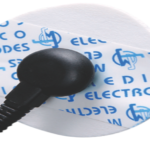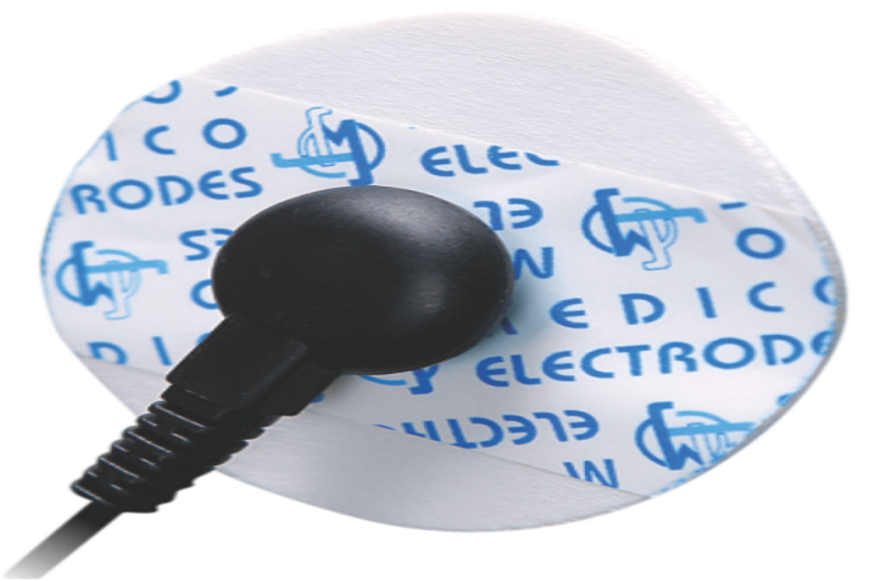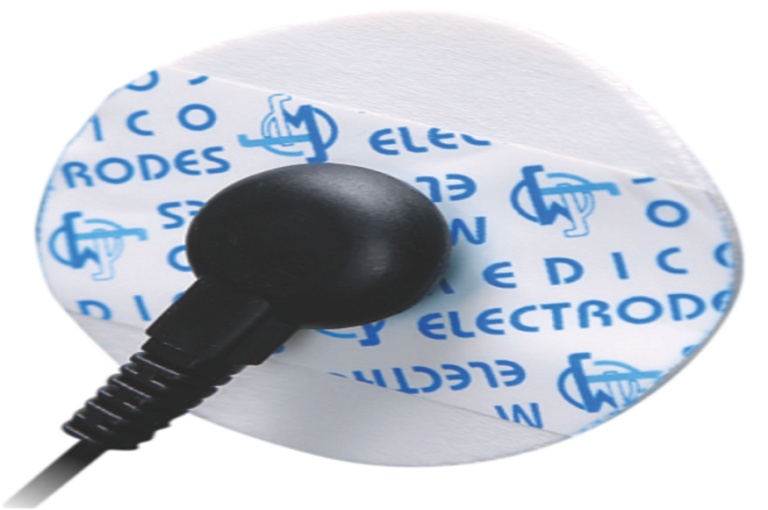As is common practice, cardiologists heavily rely on this imaging technique (ECG) to make an accurate diagnosis. Simply put, healthcare providers can diagnose and follow many heart disease subtypes such as arrhythmia, myocardial infarction, conduction defects, and others. This is the kind of knowledge about the electrical activity of the heart that is indispensable. There should be no room for mistakes or falsification while performing an ECG, given the critical role it plays in the diagnosis of cardiac diseases and creating an adequate plan for treatment.
Electrode, which comes in contact with the body and serves as an interface between the body and the ECG device, is one of the most vital non-surgical units of ECG monitoring. The quality of the given ECG signal as well as the monitoring process results that are obtained can be greatly affected by the types of electrodes that are used. These solid gel ecg electrodes are much more advantageous than the open glass electrodes and that condition led these solid gel ECG electrodes to be a popular choice for patients.
Stable solid-state ECG electrodes are those that equip you with an upper hand
Enhanced Signal Clarity
Physical gel ECG electrodes provide a range of advantages, the most notable one being the development of electrode signal quality. The uniformity and constant contact of the electrode with the skin are ensured by the solid gel formulation, and it is also more convenient due to the elimination of the chance of some technical artifacts, for example, signal interference from air pockets and uneven distribution of the gel.
Steadily conducting electricity, wires normally transmit electrical signals from the body. The cohesive gel, due to this same principle, will eventually stick to the wearer’s skin. Because of this, the ECG patterns become more reliable and transparent which can further improve the doctors’ work of accuracy in diagnosis and therapy.
Improved Comfort of the Patient
With patient comfort in mind, solid gel ECG electrodes are constructed. Solid gel electrodes are smooth and dry to the touch, in contrast to liquid gel electrodes, which can be untidy and irritate skin. For patients with delicate skin or those who need long-term monitoring, in particular, the lack of liquid gel lessens the chance of skin irritation, making them a more pleasant alternative.
Solid gel electrodes also minimize the chance of electrode separation or slippage during patient movement or physical activity since they are frequently more flexible and adapt to the natural curves of the body. More patient compliance and accurate monitoring outcomes may follow from this increased comfort level.
Extended Wearing Period
In comparison to their liquid gel equivalents, solid gel ECG electrodes usually have a longer wear period. Long-term constant adherence and signal quality are guaranteed by the solid gel formulation’s reduced susceptibility to drying out. Frequent electrode replacements can be costly and inconvenient for individuals and healthcare providers. This prolonged wear period mitigates these issues.
When long-term ambulatory monitoring, telemetry, or critical care units are involved, or when continuous cardiac monitoring is needed, longer wear times are especially helpful. Reduced expenses for materials, fewer interruptions to the monitoring process, and more efficiency can all result from fewer electrode replacements.
Enhanced Containment Management
Encroachment prevention is critical in healthcare environments. When it comes to preventing the spread of infectious pathogens, solid gel ECG electrodes are a clear winner over liquid gel ecg electrodes.
If appropriate hygiene precautions are not rigorously observed during application and removal, liquid gel electrodes may act as a vector for the spread of infections. By doing away with the requirement to handle liquid gel, solid gel electrodes, on the other hand, lessen the chance of cross-contamination and guarantee a more hygienic monitoring experience.
Environmental Issues
The prevailing consensus is that solid gel ECG electrodes are better for the environment than their liquid gel equivalents. There is an increased production of waste since liquid gel electrodes frequently need extra materials for application and disposal, including throwaway sponges or applicators.
Nevertheless, solid gel electrodes usually don’t require any extra materials and are self-contained, meaning that their environmental impact is lower. Not having liquid gel also reduces the possibility of leaks or spills, which lowers the possibility of contaminating the environment.
Liquid gel electrocardiogram comparison
Although there are several benefits to using solid gel ECG electrodes, liquid gel electrodes should also be considered functional. As they are well-established in clinical practice, liquid gel electrodes have been utilized in ECG monitoring for decades. Many healthcare facilities find them to be a cost-effective solution because they are often more accessible and cheap.
Liquid gel electrodes may also be the better option in some circumstances where a more conforming or pliable electrode is needed, like in the case of juvenile patients or people with highly curved body surfaces. For optimal electrode-skin contact, the liquid gel can more easily conform to these distinct anatomical features.
The flexibility and conformance of contemporary solid gel electrode formulations, however, have advanced dramatically, closing the gap concerning their liquid gel equivalents.
Gel Electrodes for TENS Devices
Similarities with gel electrodes found in transcutaneous electrical nerve stimulation (TENS) devices are also noteworthy. Because they are made to let electrical signals pass through the skin, tens machine gel electrodes and ECG electrodes are somewhat similar in their construction.
Both solid and liquid gel formulations are commonly offered for TENS machine electrodes. The benefits and drawbacks of solid gel versus liquid gel formulations are mainly the same, even though they complement ECG electrodes in different ways.
Analogous to their ECG counterparts, solid gel TENS machine electrodes provide better signal quality, extended use time, and superior infection control. But when more conformance or malleability is needed, like when targeting particular muscle groups or asymmetrical body features, liquid gel TENS machine electrodes might be the better option.
Conclusion
Finally, the best ECG electrode type should be chosen after giving serious thought to the particular monitoring needs, patient characteristics, and procedures followed by the healthcare facility. To maintain cardiac monitoring accurate, comfortable, and useful for patients in need, ongoing research and development in electrode technology will surely result in additional advancements.

















+ There are no comments
Add yours